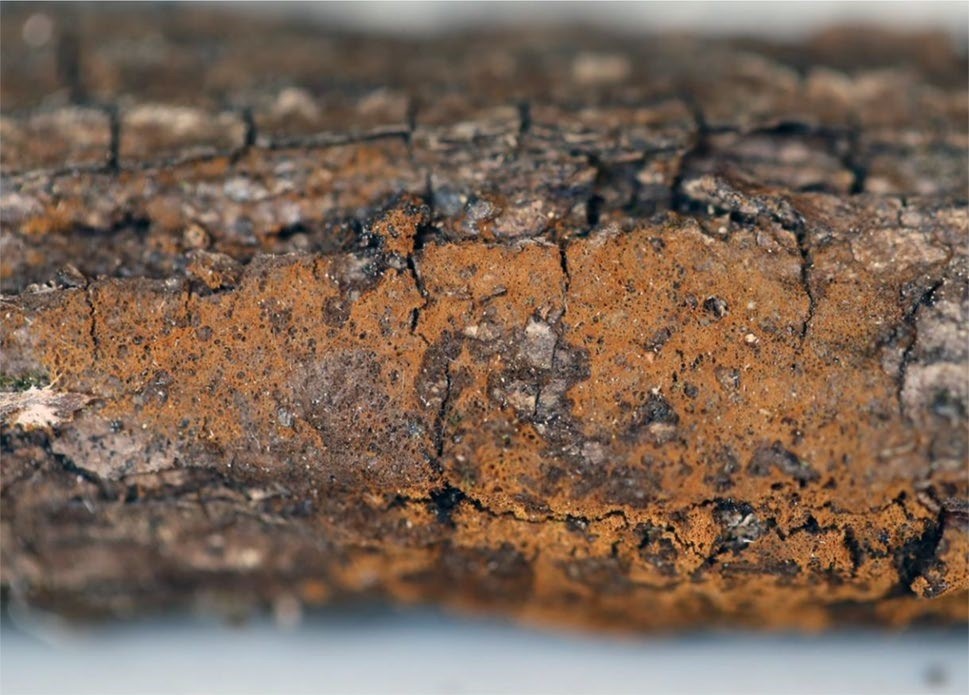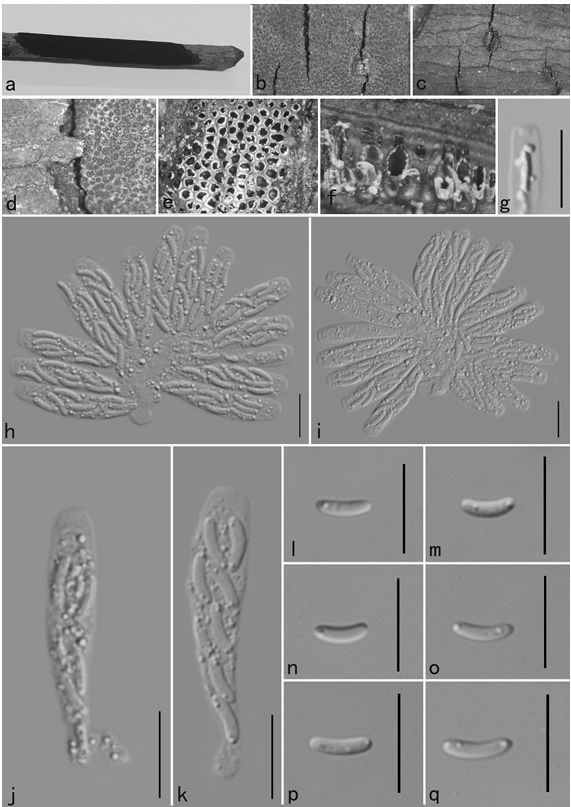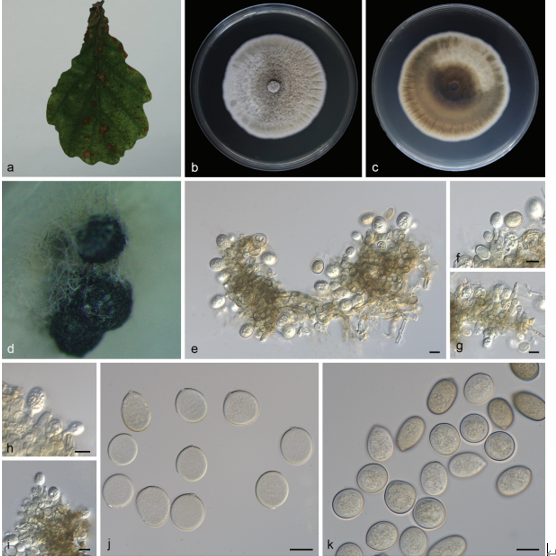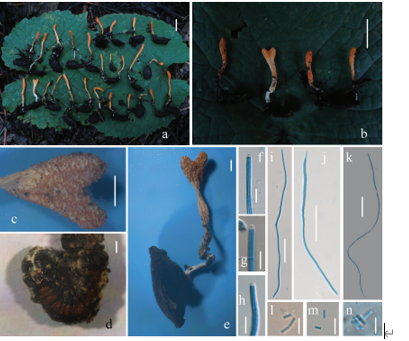Tomentella asiae-orientalis H.S. Yuan, X. Lu & Y.C. Dai 2020
Index Fungorum number: IF555723; Facesoffungi number: FoF 05601
Holotype: CHINA, Heilongjiang Province, Fenglin National Nature Reserve, on fallen angiosperm twig, 16 October 2016, Yuan 12022 (IFP 019275, holotype); on fallen branch of Pinus koraiensis, 16 October 2016, Yuan 11918 (IFP 019276).
Morphological description
Basidiocarps annual, resupinate, adherent to the substrate, arachnoid, without odour or taste when fresh, 0.5–0.8 mm thick, continuous. Hymenophoral surface smooth, pale brown to dark brown (6D8–6F7) and concolorous with subiculum when dry. Sterile margin often indeterminate, byssoid, concolorous with hymenophore. Rhizomorphs absent. Subicular hyphae monomitic; generative hyphae clamped, thick-walled, frequently branched, 5–7 μm diam, without encrustation, pale brown in KOH, cyanophilous, inamyloid. Subhymenial hyphae clamped, thin-walled, occasionally branched, 7–9 μm diam; hyphal cells more or less uniform, pale brown in KOH, acyanophilous, inamyloid. Cystidia absent. Basidia 15–45 μm long and 5–13 μm diam at apex, 4–6 μm at base, with a clamp connection at base, clavate, stalked, sinuous, without transverse septa, pale brown in KOH and in distilled water, 4-sterigmate; sterigmata 6–8 μm long and 1–1.5 μm diam at base. Basidiospores thickwalled, (7–)7.5–8.5(–9) × (6–)6.5–7.5(–8) μm, L = 8.12 μm, W = 7.08 μm, Q = 1.08–1.2 (n = 60/2), globose to subglobose in frontal and lateral views, echinulate, pale brown in KOH and distilled water, cyanophilous, inamyloid; echinuli usually isolated, sometimes grouped in 2 or more, up to 2.5 μm long.
Habitat: On fallen angiosperm twig.
Distribution: In China.
GenBank Accession: ITS: MK211711, MK211710; LSU: MK446334, MK446333.
Notes: Tomentella bryophila (Pers.) M.J. Larsen is similar to T. asiae-orientalis by its basidiocarps adherent to the substrate, smooth hymenophoral surface, clamped hyphae, globose to subglobose basidiospores and the absence of rhizomorphs and cystidia. However, T. bryophila differs from T. asiae-orientalis by having short and inflated subhymenial hyphal cells, utriform basidia and encrusted subicular hyphae (Kõljalg 1996). T. changbaiensis resembles T. asiae-orientalis by light brown to dark brown basidiocarps adherent to the substrate, smooth hymenophoral surface, clamped hyphae, globose to subglobose basidiospores and the absence of rhizomorphs and cystidia. However, T. changbaiensis differs from T. asiae-orientalis by having short and inflated subhymenial hyphal cells and utriform basidia.
Reference: Hai‑Sheng Yuan1,2· Xu Lu1,2 · Yu‑Cheng Dai3 ·

A basidiocarp of Tomentella asiae-orientalis (IFP 019275, holotype)









